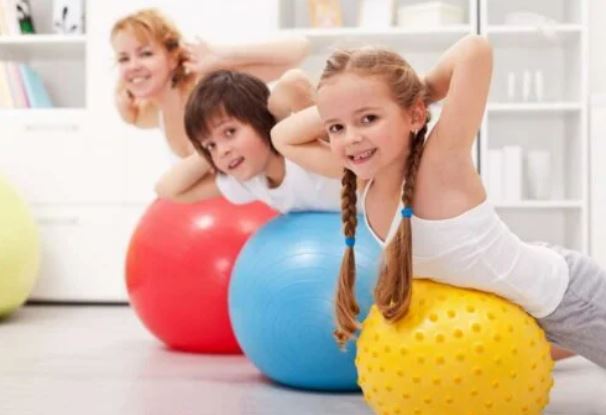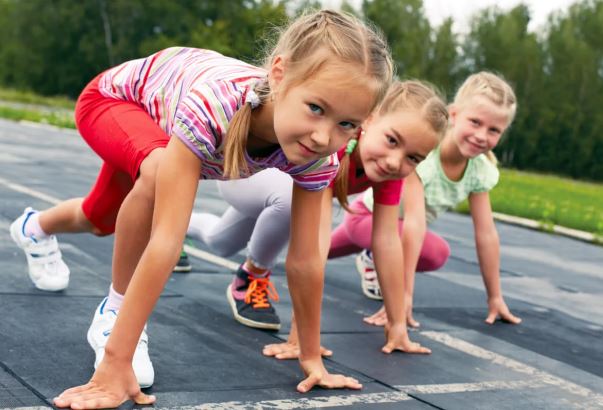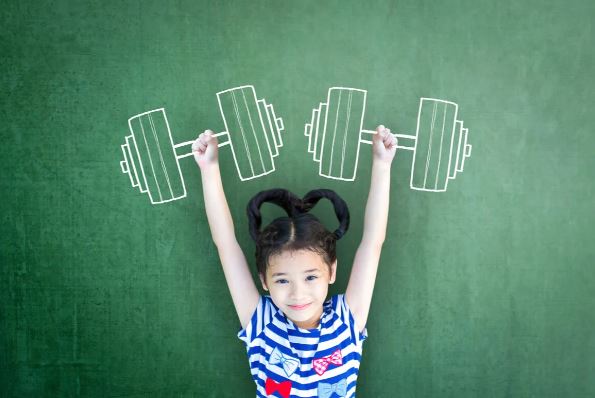Physical exercise in children takes them away from sedentary lifestyle, strengthens their muscles, refines their coordination and lays the foundation for their future health.

Physical exercise in children is any activity that aims to improve health, performance and quality of life. Unlike physical activity, exercise is planned, structured, and systematic.
Age doesn’t matter and the earlier you start the better. Especially if children practice it, since it keeps them away from sedentary lifestyle and obesity. In this regard, in recent years some alerts have been lit, especially when the use of communication technologies and social networks was accentuated, which concentrated the youngest in front of the screens.
On average, children spend more than two hours exposed to technological equipment, such as consoles and mobiles. These influence the scant attention they devote to physical exercise and influence the intake of high-calorie foods.
Benefits of physical exercise in children

Physical exercise has physical, social, and personal benefits for children.
Physical exercise in children increases the metabolic activity of their muscles, since they will need more oxygen and nutrients and, on the other hand, get rid of waste.
To achieve the metabolic increase, the system redistributes blood flow to the muscles that are active. Which, by taking advantage of the torrent, absorb oxygen and nutritional substances.
In children, it provides cardiorespiratory capacity, flexibility, strength, endurance and coordination. This in terms of the physical, without even mentioning the social advantages. In effect, exercising favors the relationships they establish with others and with their environment and, personally, they improve their self-esteem.
Consequences of the lack of physical exercise on the health of children
What is complex is the construction of the habit that involves carrying out physical activities and exercises compared to the facilities for immobility and sedentary lifestyle imposed by entertainment and communication technologies.
This reality has been aggravated by situations such as the Covid-19 pandemic that have made outdoor recreation impossible in many cases, in addition to having interrupted conventional life patterns.
In these conditions, it is urgent to control digital devices, fluent communication and the monitoring of routines, schedules and basic habits.
To the physical problems derived from lack of exercise such as obesity, diabetes, osteoporosis, and disorders of the immune system, add intellectual and social problems. Thus, low physical activity affects school performance, concentration and hours of sleep.
If exercise is reflected in a healthy body, socialization does it in turn in the social and community body. A child who exercises strengthens his bones and muscles while nurturing his self-esteem and warding off depression, stress, and discouragement.
Read More:-Zen garden: what are its benefits and how to create one?
Exercises that children can do
In order to improve your cardiorespiratory endurance, your flexibility, your muscular endurance and your coordination, we present you safe and simple alternatives to carry out with children.
The first, dance. Besides excellent exercise, it is a lot of fun. The whole body is involved, increases blood circulation, corrects postures and exercises coordination. Along the same lines, some yoga poses can be performed perfectly with the little ones in the house.
The races, which children love to do, can be reoriented based on strategies such as obstacles, distances and types of routes with a stopwatch in hand. Another exercise is jumping rope. It burns calories, sharpens coordination and concentration, works and strengthens the legs, arms, shoulders and spine, and is an excellent aerobic.
Finally, the sit-ups and squats. With regard to the former, they must be guided with caution. Children model their parents, and abusing the abdominals causes pain and atrophy. Planks, leg raises, and sit-ups are strength exercises that warrant relative care.
Exercises that children should not do

Physical and emotional development is favored with Crossfit kids, always under the control of a specialist.
There are exercises that put children’s muscles, tendons, joints, and spines at risk. Pay attention to recognize them and try to avoid them. Although they are confused with games, they put sensitive and developing parts of their organism in tension. Prudence and common sense are the key. For example, squatting while holding onto the ankles can injure menisci, tendons, and knees.
As for stretching, bridges that involve bending backwards until you touch the ground with your hands, exerting pressure on the spine, are risky.
Also trying to touch the balls of the feet with the hands, which puts pressure on the spine, pelvis, and abdominal muscles, as well as doing wide, fast circles with the neck, would affect the first vertebrae. They are recommended only from side to side and gently.
However, exercises that children should not perform without adult and professional accompaniment are those that concern strength training with weight lifting. They are exercises that increase your bone mass, muscle strength, and motor skills, but require special attention.
Myths about whether they affect growth are discarded; however, personalized preference routines must be performed under medical evaluation.
WHO recommendations on physical activity in children
Sedentary lifestyle, obesity and inactivity cause about 5 million deaths in the world population. For this reason, the World Health Organization has warned about the need for children to spend less time sitting down and play more.
The figures are eloquent: 23% of adults and 80% of adolescents “do not do enough physical activity,” says the organization. Hence the importance of establishing healthy lifestyle habits with fewer screens, more games and more hours of good quality sleep.
The recommendations aim to improve the motor and cognitive development of children in the first five years to form the basis of a healthy life. In all cases, no more than one hour of screen time and about three hours of physical activity with routines and practices of different intensity, from moderate to high, distributed throughout the day.
Physical exercise in children, a guarantee of health in adulthood
Research indicates that the origin of cardiovascular diseases are in childhood and adolescence. Levels of lipids or fats, lipoproteins, blood pressure and obesity also reach adulthood.
To this is added that the patterns of physical exercise in children tend to continue into adulthood. If certain habits have not been acquired when they are older, it is likely that they will not be acquired in adulthood: it is concluded that childhood and adolescence are hotbeds of healthy men and women.
On the other hand, although the physical condition and the genetics weigh in the disposition to the physical activity there are some elements that become imperative. For this reason, it is vitally important to create social and motivational conditions as well as opportunities for children and adolescents to perform physical exercises and competitive sports.





